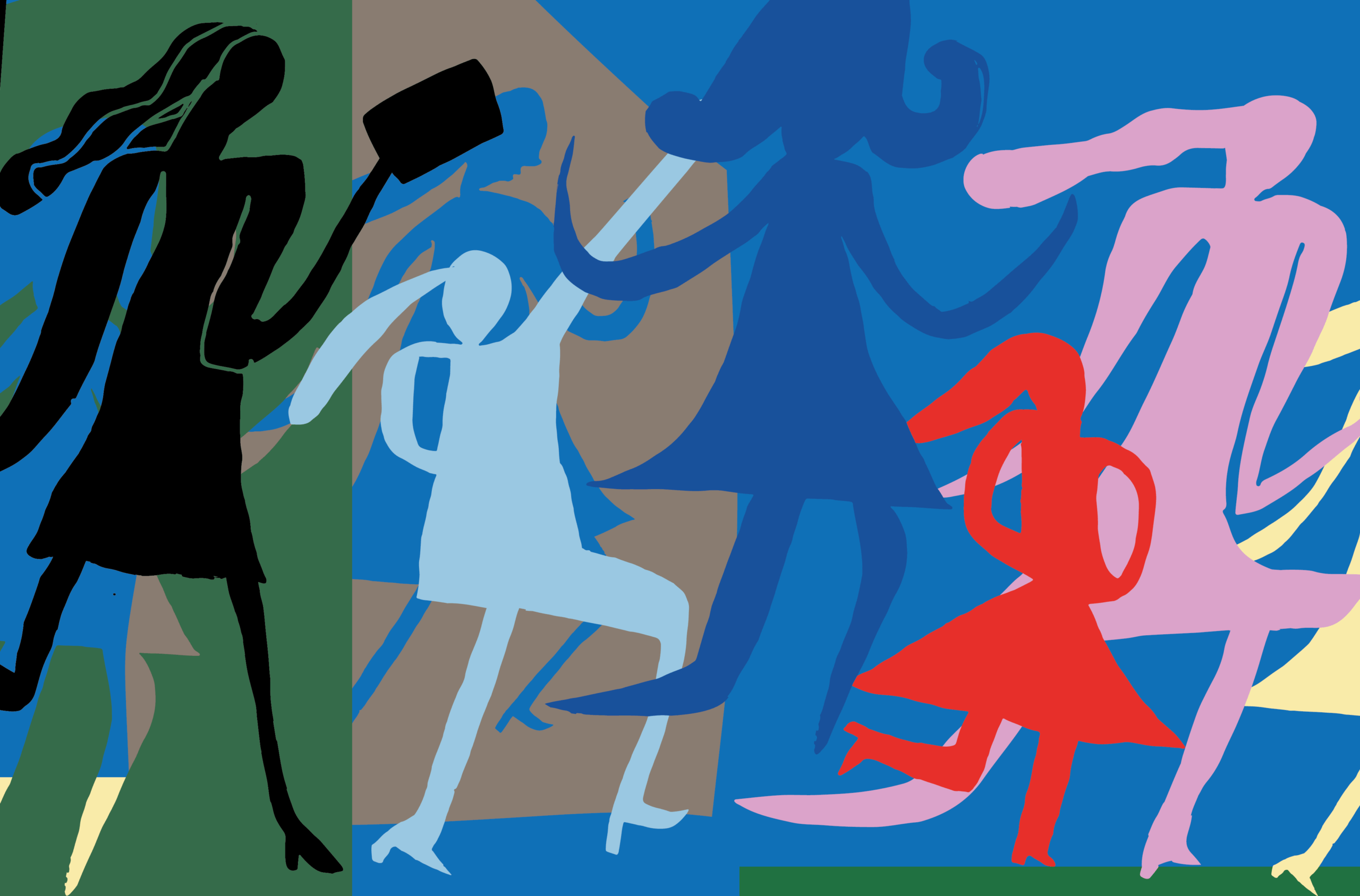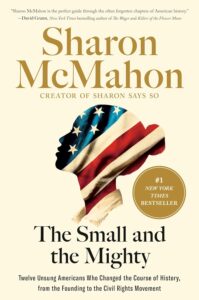
Not Small in Heart

Our mothers were right: we can make a difference in the lives of others through seemingly small acts of kindness.
Author Sharon McMahon illustrates this clearly in The Small and the Mighty, telling the stories of 12 individuals in the United States who greatly improved the well-being of others—“the people outside the dominant caste, those whose impact has been missed by people who either don’t know where to look or have intentionally decided not to.”
The Small and the Mighty
By Sharon McMahon
Penguin Random House
$32
The Small and the Mighty is not a collection of anecdotes, but a rigorously told history grounded in facts, supported by referenced sources. “I wrote this book because I have long suspected that the best Americans are not always famous,” McMahon writes. “More than twenty years of research have confirmed my intuition. The best Americans are not the critics, they are the doers.” McMahon’s great skill in storytelling brings her subjects to the forefront and places them into historical context while breathing life into each.
Take Clara Brown. Born into slavery in 1800 in Kentucky, she was able to marry another slave, Richard, for love, a rarity for enslaved people. They had four children together. When their plantation owner died, “they had to be separated and sold, one by one, to settle his estate. Each member of Clara’s family, her husband and four beloved children, took turns stepping up onto the auction block, hoping against hope for some kind of miracle that might allow them to stay together. But none came.”
Over the next several years, Clara received word that all her family had died, except possibly daughter Eliza. For six decades, Clara never gave up trying to find her last living relative.
Following the death of her subsequent slaveholder, Clara had to leave Kentucky to remain free. She headed west to Colorado, gold rush territory in 1859, walking 700 miles and making three meals each day for the others in her caravan.
Clara was the first woman to cross the “Great American desert.” Arriving in Colorado, she saw the “abject poverty” of the miners and fed them, washed their clothes, and found them beds. She saved many lives through her actions, earning the informal title of the governor of Colorado.
And here is the spoiler: near the end of her life, Clara was reunited with Eliza, in Council Bluffs, Iowa. “For the first time in decades, Clara felt a truly unmitigated joy. All the toil, all the nights of seemingly unanswered prayers, all the moments of quiet desperation that she pushed aside to continue reaching for hope, all of it was forgotten in the moment that she finally held Eliza Jane in her arms.” Clara discovered she was also a grandmother several times over.
McMahon writes each story with a peripheral vision, explaining the politics and politicians of the time, what people ate, the common dress, and the general zeitgeist. Clara Brown comes off the page, as just one example, and becomes more than a historical figure. The reader cares about her, mourns with her, experiences her bone-dead tiredness at the end of a day.

I found myself stopping several times while reading these accounts and thinking about the individuals I’ve known who worked tirelessly, and against all odds, to do good in the community. I thought about how I did not give them enough credit for their impact and how small acts of courage make our communities and nation stronger. I compared myself against the high bar of their acts and wondered if I could have done the same, held out and pushed forward against resistance.
Would I, for instance, have had the stamina of an Inez Milholland, to crusade for a cause dear to her and so many others? In 1916, “For the first time in history, women had organized themselves into a political force to be reckoned with,” explains McMahon. Lawyer and women’s suffrage activist Milholland was tapped to lead a speaking tour across the country to garner support for women’s right to vote. She captivated and dazzled audiences. “I believe,” she told the assembled crowds, “and every woman of spirit and independence believes, that women are human beings with a definite part to play in the shaping of human events.”
Milholland grew ill on the speaking tour but insisted upon pressing on. Her presence at the lectern brought both publicity and enthusiastic crowds.
Weaker and weaker, she nonetheless continued. Seeking medical assistance, she was prescribed strychnine, used today as rat poison, as a stimulant to her nerve endings. “Her body was giving out, purpled all over in dark bruises” as she continued to deliver speeches, McMahon writes. On Nov. 25, 1916, Milholland died at age 30, “the Joan of Arc of the suffrage movement, a martyr for the cause of liberty.” Thousands attended her memorial service in Washinton, D.C., sending a strong message to President Woodrow Wilson and elected officials of the day demonstrating women’s “bravery and worth on the world stage.” Milholland played an important role in the momentum leading to women’s right to vote.
As we consider the past and future of the United States, there is no better read than The Small and the Mighty. It is a distinctly American book: we will all recognize the obstacles the subjects faced and, in the end, admire them even more because we have a better understanding of the grit and perseverance they needed to prevail.




